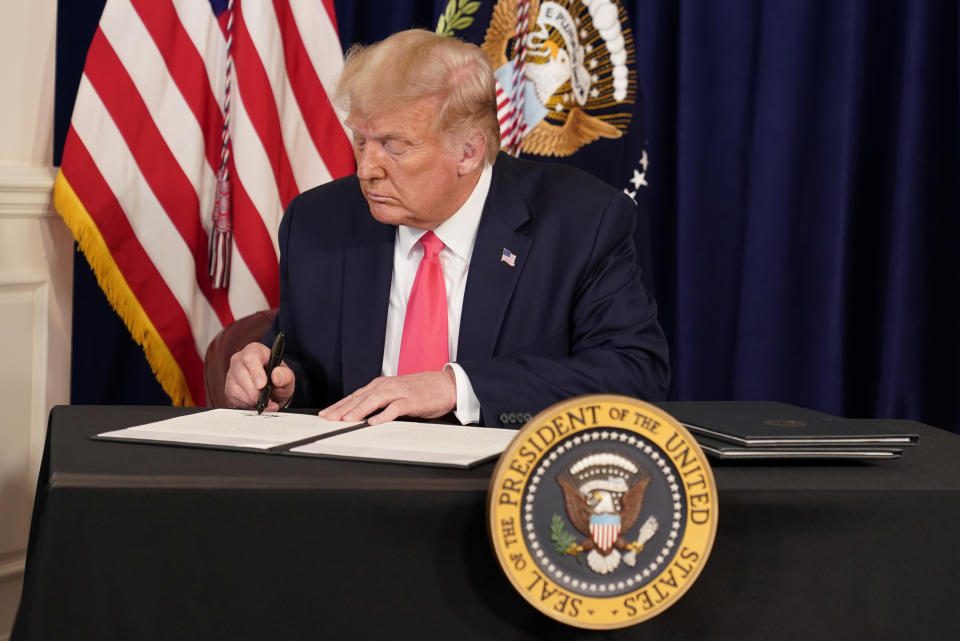Workers will see smaller paychecks next year under Trump's payroll tax deferral
The goal of President Donald Trump’s executive memorandum on payroll tax deferral is to get more money into the pockets of Americans this year. But the move also means those same workers will get smaller paychecks for the first four months in 2021, according to new guidance on how to implement the deferral.
On Friday, the Internal Revenue Service (IRS) and Treasury Department told employers that they would be liable to pay back what they defer from their employees’ paychecks under the executive memo, so workers won’t face a huge tax bill when they file their 2020 federal returns.
Read more: Everything you need to know about Trump’s payroll tax deferral
To accomplish this, employers would take double the Social Security tax out of employees’ paychecks in the first four months of 2021 to pay Uncle Sam for the amount deferred at the end of 2020, according to Pete Isberg, vice president of government affairs at the payroll company ADP.
“Essentially, employees are going to notice that their net pay is going to be reduced next year in roughly equal amounts to what was increased in September through December,” Isberg told Yahoo Money. “For that reason, we thought employees were going to have an opinion about this.”
‘Gave us exactly one business day to respond’

The guidance also puts pressure on employers. The deferral was supposed to begin on Sept. 1 and run through the end of the year, according to Trump’s action. But because the guidance came out so late, employers won’t be able to implement the deferral immediately, Isberg said.
“That notice coming out five o’clock on Friday gave us exactly one business day to respond,” he said. “Keep in mind, employers run their payrolls well in advance of payday. So some September payroll was being run early last week.”
Read more: Payroll taxes, explained
ADP plans to roll out its implementation of the deferral in early September for its clients, but most other employers won’t have theirs ready until late September or even into October, Isberg said.
The guidance requires employers to figure out the total amount that would be deferred for each employee who wants to opt in, so that enough is withheld in next year’s paychecks before tax time.
Employers will also need to educate their workers on what will happen to their paycheck this year and next if they choose a deferral, so there are no unwanted surprises.
“It’s a pretty big workload to succinctly tell each employee their options,” Isberg said. “So that question applies to like 100 million people.”
Then there is the reporting of the deferred wages that employers will have to do as well, so they don’t get assessed for any taxes not paid next year. Ultimately, some employers may not think the legwork involved is even worth it and can opt out, which is an option they have under the memorandum, Isberg said.
“It’s a lot of paperwork to do over the next few days,” Isberg said. “Jury is out on how popular this is going to be.”
Janna is an editor for Yahoo Money and Cashay. Follow her on Twitter @JannaHerron.
Read more:
President Trump's payroll executive order could leave Americans with 'substantial tax liability'
The IRS is failing to collect billions in back taxes owed by super rich Americans
How the extended tax deadline affects payments, retirement contributions, and more
Tax expert: Americans who don't file leave ‘billions of dollars’ on the table
Read more personal finance information, news, and tips on Cashay

 money
money 

